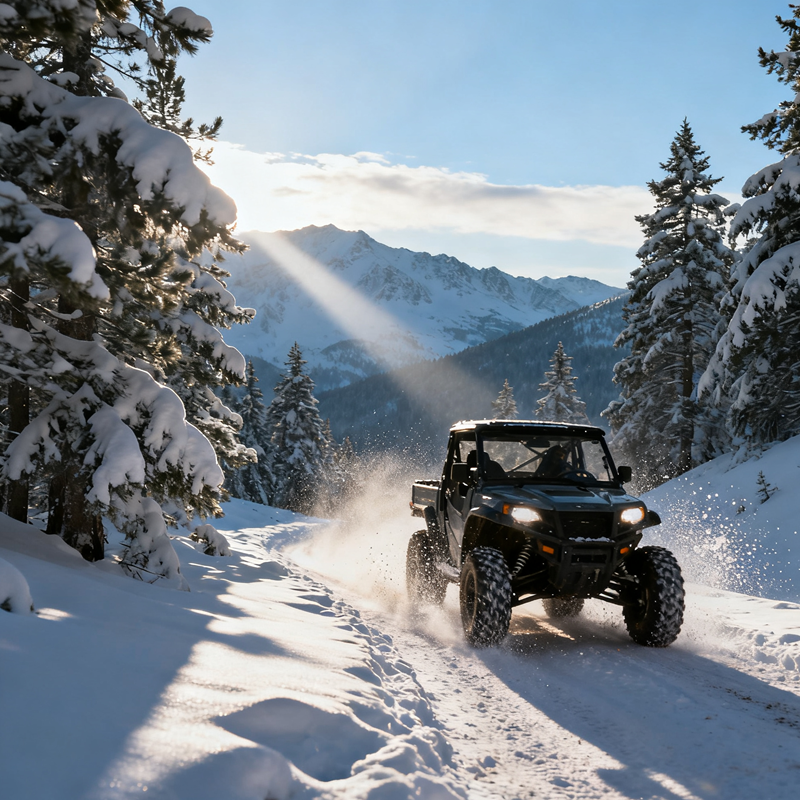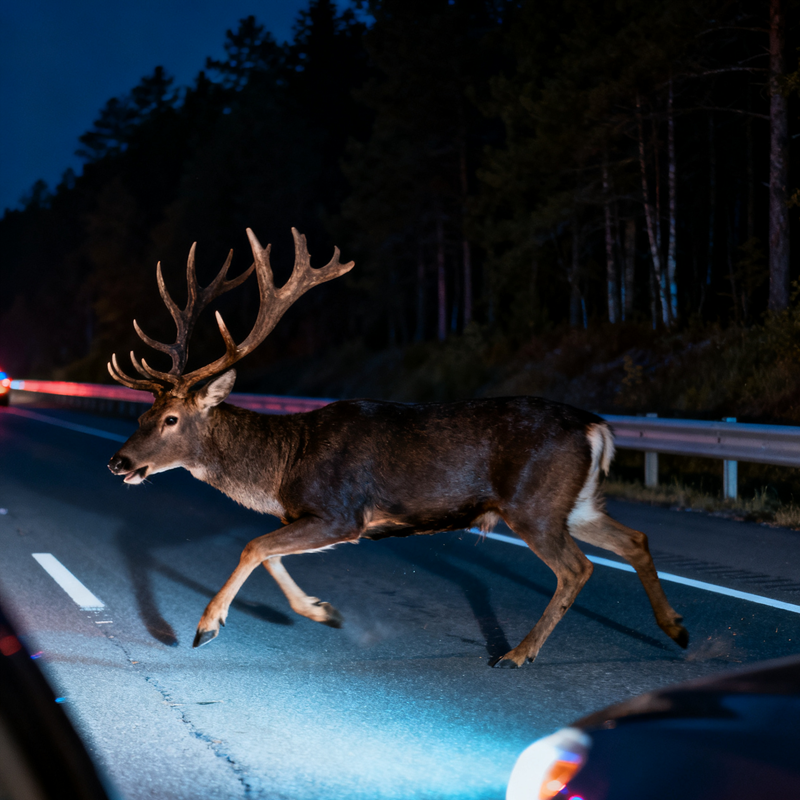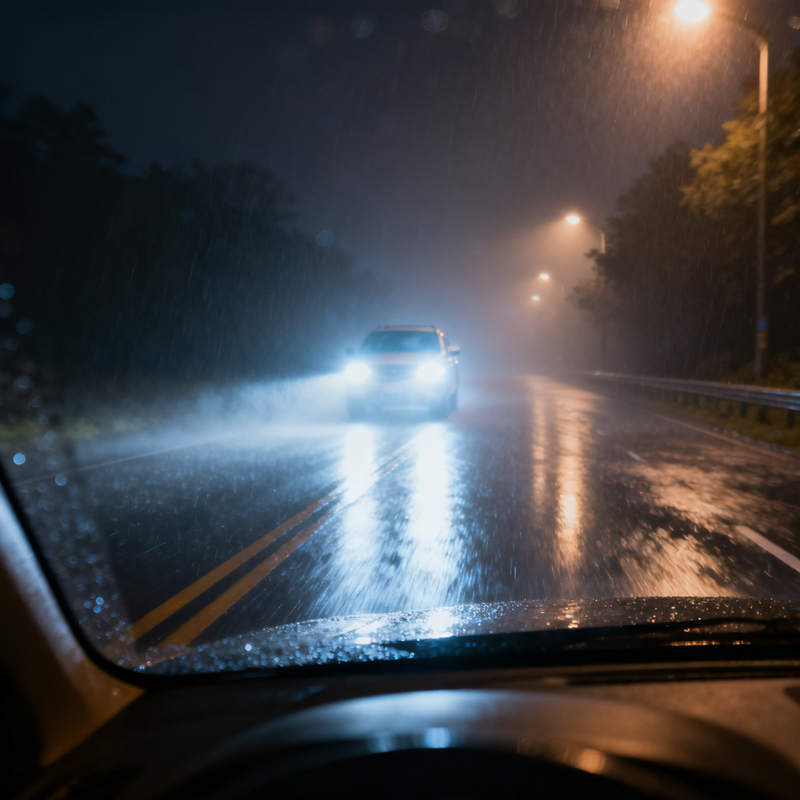Winter overlanding offers some of the most breathtaking scenery and rewarding adventures, but it also presents unique challenges that demand careful preparation. Unlike summer camping trips, winter overlanding requires specialized knowledge, equipment, and skills to ensure your safety in freezing temperatures and potentially hazardous conditions. Each year, unprepared adventurers find themselves in dangerous situations that could have been avoided with proper planning.
The appeal of winter overlanding is undeniable. Snow-covered landscapes, untouched wilderness, and the quiet solitude of frozen environments create unforgettable experiences. However, the very elements that make winter overlanding so beautiful also make it potentially dangerous. Sudden storms, whiteout conditions, freezing temperatures, and limited daylight hours transform familiar trails into challenging expeditions that demand respect and preparation.
This comprehensive guide will walk you through every aspect of staying safe during winter overlanding adventures. We'll cover vehicle preparation, essential gear, driving techniques, emergency protocols, and how modern technology can provide an extra layer of security. Whether you're a seasoned overlander attempting your first winter expedition or a cold-weather veteran looking to refresh your knowledge, these tips will help ensure your winter overlanding trips remain safe and enjoyable.
Vehicle Preparation: Your Mobile Basecamp
Proper vehicle preparation separates successful winter overlanding adventures from potential disasters. Your vehicle isn't just transportation—it's your shelter, your escape pod, and your survival tool. Preparing it for winter overlanding conditions requires more than just adding winter tires.
Start with a comprehensive mechanical inspection. Have a qualified technician check your battery, as cold weather reduces battery capacity by up to 50%. Ensure your cooling system contains the proper mixture of antifreeze and that all hoses are in good condition. Verify that your heater and defroster work effectively, as these are crucial for both comfort and safety during winter overlanding.
Tire selection dramatically impacts your winter overlanding safety. Dedicated winter tires with the three-peak mountain snowflake symbol provide significantly better traction in snow and ice compared to all-season tires. Consider carrying tire chains for extreme conditions, and practice installing them before your trip. Proper tire pressure is equally important—remember that pressure drops about 1 PSI for every 10°F temperature decrease.
Electrical system preparation is crucial for winter overlanding. The additional draw from lights, heaters, and other accessories strains your vehicle's electrical system. Consider upgrading your alternator or adding a secondary battery system if you're running multiple accessories. Ensure all connections are clean and tight, and carry jumper cables or a portable jump starter.
Create a winter-specific vehicle recovery kit. This should include a sturdy shovel, traction boards, recovery straps, and a winch if possible. During winter overlanding, getting stuck isn't just inconvenient—it can become dangerous quickly as temperatures drop. Practice using your recovery gear in safe conditions before you need it in an emergency.

Essential Gear for Winter Overlanding Survival
The right gear makes the difference between an uncomfortable night and a life-threatening situation during winter overlanding. Your summer camping equipment likely won't suffice when temperatures plummet below freezing.
Your sleep system requires special attention for winter overlanding. A four-season tent withstands snow accumulation and high winds. Your sleeping bag should be rated 10°F lower than the coldest temperatures you expect to encounter. Use an insulated sleeping pad with an R-value of 5 to prevent heat loss to the ground. In extreme cold, consider adding a fleece liner to your sleeping bag.
Heating solutions require careful consideration for winter overlanding. Portable propane heaters provide warmth but require ventilation to prevent carbon monoxide buildup. Diesel parking heaters are popular among winter overlanders because they vent exhaust outside your vehicle. Whatever heating solution you choose, always bring a battery-powered carbon monoxide detector.
Communication devices are non-negotiable for winter overlanding. Mobile phones often lose service in remote areas, so carry a satellite communicator like a Garmin inReach or SPOT device. These allow two-way messaging and emergency SOS functionality when you're beyond cellular range. Tell someone your detailed itinerary and check in regularly.
Food and water management changes significantly during winter overlanding. Store water inside your vehicle to prevent freezing, and use insulated containers. Bring more water than you think you'll need, as dehydration risk increases in cold weather. High-calorie, easy-to-prepare foods provide essential energy. A portable stove with winter-grade fuel allows you to melt snow for additional water if necessary.
Winter Overlanding Driving Techniques
Driving in winter overlanding conditions requires adjusted techniques and heightened awareness. Snow, ice, and reduced visibility create challenges that demand patience and skill.
Speed management is your most important driving technique for winter overlanding. Reduce your speed significantly compared to summer driving conditions. On snow-covered trails, speeds as low as 10-15 mph may be appropriate. Remember that stopping distances can increase by 5-10 times on ice compared to dry pavement.
Learn to read snow conditions during winter overlanding. Fresh, unpacked snow often provides better traction than snow that has melted and refrozen. Be especially cautious of shaded areas where black ice persists even on sunny days. When descending hills, use engine braking rather than riding your brakes to maintain control.
Handle skids correctly during winter overlanding. If your vehicle begins to skid, look where you want to go and steer in that direction. Avoid slamming on the brakes, which can worsen the skid. Practice recovery techniques in an empty parking lot to build muscle memory before you need these skills on the trail.
Manage momentum carefully during winter overlanding. Maintaining steady momentum helps you climb snowy hills, but excessive speed can be dangerous. If you lose forward progress, stop immediately rather than spinning your wheels, which digs you deeper. Reverse slightly and try again with less wheel spin.
Visibility challenges define many winter overlanding situations. Falling snow, fogged windows, and frost buildup all reduce visibility. Use your defroster continuously, and consider applying an anti-fog treatment to interior surfaces. Keep your headlights clean, and use them even during daylight hours to increase your visibility to other vehicles.
Navigating Winter Specific Challenges
Winter overlanding presents unique obstacles that don't exist during other seasons. Understanding these challenges helps you prepare and respond appropriately.
Whiteout conditions occur suddenly during winter overlanding when wind blows snow so densely that visibility drops to near zero. If caught in a whiteout, slow down immediately. If visibility becomes unsafe, pull over well off the road or trail and wait for conditions to improve. Use your hazard lights to make your vehicle visible to others.
River crossings become more dangerous during winter overlanding. What appears to be solid ice may not support your vehicle's weight. Ice thickness should be至少 12 inches for medium-sized vehicles and 15+ inches for full-size trucks. When in doubt, find an alternative route rather than risking breakthrough.
Avalanche awareness is crucial for winter overlanding in mountainous regions. Check avalanche forecasts before your trip, and avoid traveling through avalanche terrain when risk is elevated. Carry avalanche safety gear—including a beacon, probe, and shovel—and know how to use it. Travel one vehicle at a time through potential avalanche zones.
Frostbite and hypothermia represent serious medical risks during winter overlanding. Dress in layers, with a moisture-wicking base layer, insulating mid-layer, and waterproof outer layer. Keep extra clothing and blankets in your vehicle. Recognize early signs of hypothermia—shivering, confusion, slurred speech—and take immediate warming actions.

Emergency Preparedness for Winter Overlanding
Despite careful planning, emergencies can still occur during winter overlanding. Your response in the first minutes of an emergency significantly impacts the outcome.
Create a winter-specific emergency plan before your winter overlanding trip. Identify potential rescue points along your route where you're most likely to find cell service or other travelers. Know the emergency contact numbers for the areas you'll be visiting, including local sheriff departments and search-and-rescue organizations.
Your vehicle emergency kit for winter overlanding should include:
Extra warm clothing and blankets
High-energy food and water for 72 hours
First-aid kit with cold-weather specific items
Emergency lighting (headlamps, flares, LED lanterns)
Multi-tool and repair supplies
Insulated sleeping bags rated for below-freezing temperatures
Stay with your vehicle if you become stranded during winter overlanding. Your vehicle provides shelter and makes you easier to find. Run the engine for brief periods to provide heat, but ensure the exhaust pipe remains clear of snow. Use emergency lighting strategically to conserve battery power while making yourself visible to rescuers.
Practice emergency scenarios before your winter overlanding trip. What would you do if your vehicle became immobilized? How would you stay warm if your heating system failed? Thinking through these scenarios in advance helps you respond calmly and effectively if emergencies occur.
Technology Enhancements for Winter Overlanding Safety
Modern technology provides valuable tools that enhance safety during winter overlanding adventures. While traditional skills remain essential, technology offers additional layers of protection and convenience.
GPS navigation systems designed for overlanding, like Gaia GPS or onX Offroad, help you stay on track even when trails disappear under snow. Download maps for offline use, as you can't rely on cellular data in remote winter overlanding locations. These apps often include valuable layers showing land ownership, which helps you avoid trespassing.
Weather technology has improved dramatically for winter overlanding safety. Satellite weather services provide updates in areas without cell coverage. Monitoring approaching storms allows you to adjust your route or hunker down before conditions deteriorate. Many satellite communicators now include weather forecast capabilities.
Advanced lighting systems significantly improve safety during winter overlanding's limited daylight hours. LED light bars and pod lights illuminate trails more effectively than standard headlights. Consider adding rear-facing work lights to assist with nighttime camp setup and vehicle recovery situations.
Thermal imaging technology represents one of the most significant advancements for winter overlanding safety. The Robofinity Car Thermal Night Vision Camera detects heat signatures rather than relying on visible light, allowing it to "see" through darkness, snow, fog, and other low-visibility conditions common in winter overlanding.
The Robofinity system identifies people, animals, and vehicles up to 200 meters away, providing audio alerts before potential hazards become visible to the naked eye. The system's ability to detect living beings and vehicles through complete darkness and adverse weather makes it particularly valuable for winter overlanding, when visibility is often compromised and reaction time is critical.
The installation process is straightforward, making it accessible even for those without technical expertise. For winter overlanders navigating unfamiliar trails in challenging conditions, this technology provides an additional safety margin that complements traditional driving skills and preparation.

Building Experience Safely
Winter overlanding skills develop through experience, but gaining that experience requires a thoughtful approach that prioritizes safety throughout the learning process.
Start with shorter trips close to home when beginning your winter overlanding journey. Practice setting up camp in your driveway or a local campground before venturing into remote areas. Each successful trip builds confidence and reveals equipment or skill gaps in controlled environments.
Travel with experienced winter overlanders whenever possible. Learning from others' experience helps you avoid common mistakes. Many overlanding groups organize winter training events where you can practice skills under expert supervision.
Continue learning through reputable sources. Books, online courses, and in-person training all contribute to your winter overlanding knowledge. Focus particularly on weather interpretation, navigation, and emergency medicine skills specific to cold environments.
Know your limits and practice turning back. The most experienced winter overlanders recognize when conditions exceed their capabilities or comfort level. There's wisdom in postponing a trip or choosing an alternate route when conditions become dangerous. The trail will remain for another day.
Conclusion: The Rewarding Challenge of Winter Overlanding
Winter overlanding transforms familiar landscapes into magical, frozen wonderlands worth exploring. While it demands greater preparation and respect than summer adventures, the rewards of silent snow-covered forests, brilliant starry skies, and the satisfaction of mastering challenging conditions make winter overlanding an incredibly fulfilling pursuit.
Your safety during winter overlanding depends on the intersection of proper equipment, developed skills, and wise decision-making. Each element supports the others—the best gear can't compensate for poor judgment, and excellent skills can't overcome inadequate preparation.
As you develop your winter overlanding capabilities, you'll discover that the challenges become part of the appeal. Problem-solving in beautiful environments, learning self-reliance, and experiencing nature's quiet winter beauty create memories that last long after the trip ends.
The key to successful winter overlanding lies in embracing both the adventure and the responsibility it requires. With careful planning, proper equipment, and respect for winter's power, you can safely explore stunning frozen landscapes that most people never experience. Each trip builds confidence and skills for the next, creating a rewarding progression that keeps drawing you back to winter's quiet beauty.




Dejar un comentario
Todos los comentarios se revisan antes de su publicación.
Este sitio está protegido por hCaptcha y se aplican la Política de privacidad de hCaptcha y los Términos del servicio.